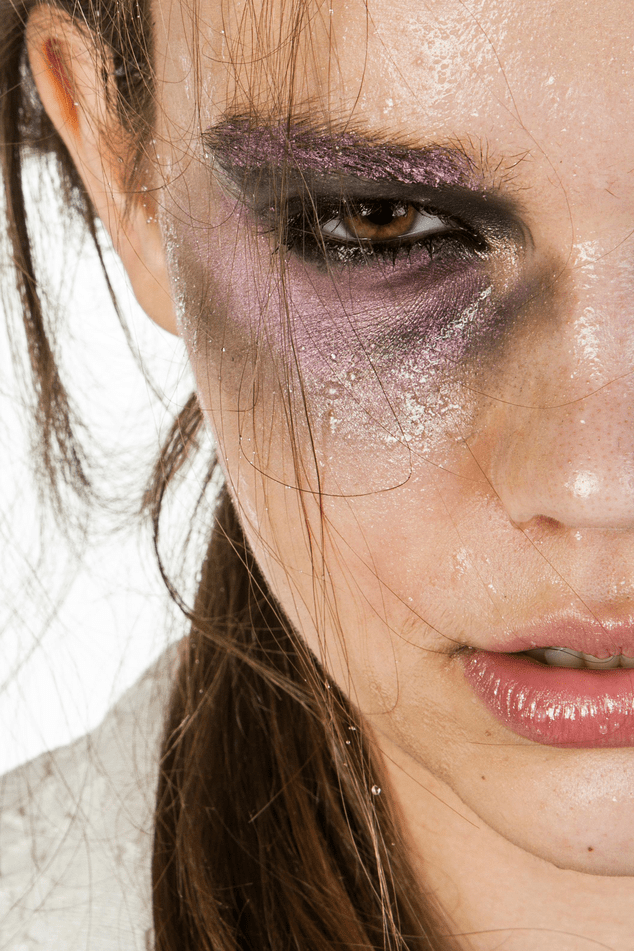Last updated on December 18th, 2024 at 03:24 am
- 1. Understanding Body Dysmorphic Disorder
- 1.1 Causes and Risk Factors
- 1.2 Symptoms and Behaviors
- 2. The Intersection of BDD and Addiction
- 2.1 Co-occurrence of BDD and Substance Use Disorders
- 2.2 Common Substances Abused in BDD
- 3. Specific Manifestations of BDD and Addiction
- 3.1 Muscle Dysmorphia and Steroid Abuse
- 3.2 BDD and Eating Disorders
- 3.3 BDD and Cosmetic Surgery Addiction
- 4. The Impact of Social Media and Technology
- 4.1 “Snapchat Dysmorphia”
- 4.2 Online Communities and BDD
- 5. Treatment Approaches for BDD and Co-occurring Addiction
- 5.1 Cognitive-Behavioral Therapy (CBT)
- 5.2 Exposure and Response Prevention (ERP)
- 5.3 Pharmacological Interventions
- 5.4 Holistic and Complementary Therapies
- 6. Prevention and Early Intervention
- 7. The Role of Support Systems
- 7.1 Family Involvement in Treatment
- 7.2 Peer Support Groups
- 8. Challenges in Diagnosis and Treatment
- 9. Future Directions in Research and Treatment
- 10. Quality of Life and Social Functioning
- 10.1 Vicious Cycle of Body Dysmorphic Concerns
- 11. Co-occurring Disorders and Impacts on Mental Health
- 11.1 Comorbidity in Body Dysmorphic Disorder
- 12. Behavioral Addictions and Substance Use Disorders
- 12.1 Classes of Substance Use and BDD
- 13. Body Dysmorphic Disorder in Different Populations
- 13.1 Disorder in Adolescent Populations
- 14. Heritability and Genetic Factors
- 14.1 Family History and Genetic Factors
- 15. Cognitive and Behavioral Treatment Options
- 15.1 Integrative Approaches for Treating BDD and Addiction
- 16. Social Media Influence on Body Dysmorphia
- 16.1 Media Portrayal and Appearance Anxiety
- 17. Cultural Factors and Body Dysmorphia
- 17.1 Community and Social Dynamics
- 18. Physical Health Impacts of Body Dysmorphic Disorder
- 18.1 Body Dysmorphia and Exercise Addiction
- 18.2 Body Dysmorphia and Cosmetic Surgery Addiction
- 19. Body Dysmorphia and Substance Abuse in Community Settings
- 19.1 Community-Based Prevention and Awareness
- 20. Assessment and Diagnosis of Body Dysmorphic Disorder
- 20.1 Psychometric Properties of Assessment Tools
- 21. Treatment Implications and Strategies
- 21.1 Intensive Treatment Services for BDD and Substance Abuse
- 22. Body Dysmorphic Disorder and Post-Traumatic Stress Disorder
- 22.1 Comorbidity Rates in PTSD and BDD
- 23. Social Functioning and Intimate Relationships
- 23.1 BDD and Romantic Relationships
- 24. Behavioral Treatment and Psychosocial Functioning
- 24.1 Treatment Implications for Social Phobia and BDD
- 25. Features of Body Dysmorphic Disorder in Adult Populations
- 25.1 Occupational Functioning and BDD
- 26. Impulse Control and Compulsive Traits in BDD
- 26.1 Interview for Impulse Control in BDD
- 27. Heritability and Environmental Influences
- 27.1 Environmental Factors and Media Portrayal
- 28. Psychiatric Treatment and Dual Diagnosis Therapy
- 28.1 Intensive Treatment for Co-occurring Disorders
- 29. Psychometric Properties of Measures Used in BDD
- 29.1 Diagnostic Assessment and Person Assessments
- 30. Elevated Compulsivity Scores and Dysmorphic Disorder
- 30.1 Elevated DAST-10 Scores in BDD Patients
- 31. Dysfunction in Body Perception and Neurobiology
- 31.1 Neurotransmitter Imbalances and Hormonal Factors
- 32. Body Dysmorphia and Avoidance Behaviors
- 32.1 Coping Mechanisms for Avoidance Behaviors
- 33. BDD and Self-Harm
- 33.1 Suicidal Thoughts and BDD
- 34. Support Groups for Body Dysmorphia and Addiction
- 34.1 Online Addiction Support and Body Dysmorphic Concerns
- 35. Long-Term Recovery and Relapse Prevention Strategies
- 35.1 Acceptance Therapy and Holistic Approaches
- Conclusion
- Frequently Asked Questions
- How Does Body Dysmorphia Relate to Substance Abuse?
- What Role Does Self-Medication Play in Body Dysmorphia?
- How Does Body Dysmorphia Impact Quality of Life?
- Are There Links Between Body Dysmorphia and Post-Traumatic Stress Disorder (PTSD)?
- How Prevalent Are Body Dysmorphic Concerns in Adult Populations?
- How Do Symptoms of Body Dysmorphia Affect Social Situations?
- What Is the Relationship Between Body Dysmorphia and Cosmetic Procedures?
- How Does Social Anxiety Disorder Overlap With Body Dysmorphia?
- Can Body Dysmorphia Lead to Depressive Disorders?
- What Is the Vicious Cycle of Addiction and Body Dysmorphia?
- How Does Body Dysmorphia Affect Academic Performance?
- Are There Effective Behavioral Treatments for Body Dysmorphia?
- How Does Muscle Dysmorphia Relate to Steroid Abuse?
- How Are Body Dysmorphia and Social Media Connected?
- What Are the Treatment Options for Co-occurring Body Dysmorphia and Addiction?
- How Does Body Dysmorphia Influence Intimate Relationships?
- Can Body Dysmorphia Lead to Compulsive Exercise Behaviors?
- What Is the Impact of Body Dysmorphia on Occupational Functioning?
- What Role Do Genetic Factors Play in Body Dysmorphia?
- How Is Body Dysmorphia Related to Compulsive Mirror Checking?
Body dysmorphic disorder (BDD), often referred to as body dysmorphia, is a complex mental health condition that affects millions of individuals worldwide. This psychological disorder is characterized by an intense preoccupation with perceived flaws in one’s physical appearance, often leading to significant distress and impairment in daily functioning.
While the exact prevalence of BDD is difficult to determine due to underreporting and misdiagnosis, recent estimates suggest that it affects approximately 1-2% of the general population.
Let’s discover the connection between body dysmorphia (BDD) and addiction, exploring how these conditions intersect and impact mental health, self-esteem, and recovery pathways.
1. Understanding Body Dysmorphic Disorder
BDD is more than just a fleeting concern about appearance. It is a persistent and intrusive condition that can consume a person’s thoughts and behaviors, often leading to severe emotional distress and social isolation. Individuals with BDD may fixate on any aspect of their appearance, but common areas of concern include:
- Facial features (nose, eyes, skin)
- Hair (thinning, texture, color)
- Body shape and size
- Muscle tone and definition
- Specific body parts (hands, feet, genitals)
It’s important to note that these perceived flaws are often minimal or nonexistent to others, yet they cause significant distress to the individual experiencing BDD.
1.1 Causes and Risk Factors
The exact causes of BDD are not fully understood, but research suggests a combination of biological, psychological, and environmental factors contribute to its development. Some potential risk factors include:
- Genetic predisposition
- Neurobiological differences in brain structure and function
- Childhood experiences of bullying or teasing
- Perfectionist tendencies
- Societal and cultural pressures regarding appearance
- History of trauma or abuse
- Co-occurring mental health conditions
1.2 Symptoms and Behaviors
BDD manifests in various ways, often leading to compulsive behaviors and thought patterns. Common symptoms include:
- Excessive grooming or skin picking
- Frequent mirror checking or avoidance
- Seeking reassurance about appearance
- Comparing oneself to others
- Excessive exercise or dieting
- Frequent clothing changes
- Avoiding social situations
- Seeking cosmetic procedures
2. The Intersection of BDD and Addiction
The relationship between BDD and substance use disorders is complex and multifaceted. Research has shown that individuals with BDD are at a higher risk of developing addictive behaviors as a means of coping with their distress and anxiety.
2.1 Co-occurrence of BDD and Substance Use Disorders
Studies have found that the prevalence of substance use disorders among individuals with BDD is significantly higher than in the general population. This co-occurrence can be attributed to several factors:
- Self-medication to alleviate anxiety and depression
- Attempts to boost confidence in social situations
- Escape from intrusive thoughts and compulsions
- Masking emotional pain related to body image concerns
2.2 Common Substances Abused in BDD
While any substance can be misused by individuals with BDD, certain drugs are more commonly associated with the disorder:
- Alcohol: Used to reduce social anxiety and inhibitions
- Stimulants: Abused for their appetite-suppressing effects
- Benzodiazepines: Taken to manage anxiety and panic attacks
- Opioids: Used to numb emotional pain and induce relaxation


3. Specific Manifestations of BDD and Addiction
3.1 Muscle Dysmorphia and Steroid Abuse
Muscle dysmorphia, a subtype of BDD, is characterized by an obsessive preoccupation with muscularity and leanness. This condition is particularly prevalent among male bodybuilders and athletes. Individuals with muscle dysmorphia may resort to anabolic steroid abuse in pursuit of their ideal physique, despite the severe health risks associated with these substances.
3.2 BDD and Eating Disorders
There is a significant overlap between BDD and eating disorders, particularly anorexia nervosa and bulimia nervosa. Both conditions involve distorted body image and a preoccupation with appearance. Individuals with BDD may develop disordered eating patterns or abuse substances to control their weight and shape.
3.3 BDD and Cosmetic Surgery Addiction
Some individuals with BDD may become addicted to cosmetic procedures, constantly seeking surgical interventions to “fix” their perceived flaws. This can lead to multiple unnecessary surgeries, financial strain, and increased dissatisfaction with appearance.
4. The Impact of Social Media and Technology
In recent years, the rise of social media and photo-editing technology has significantly impacted body image concerns and BDD. The constant exposure to idealized and often unrealistic images can exacerbate symptoms and contribute to the development of BDD in vulnerable individuals.
4.1 “Snapchat Dysmorphia”
A new phenomenon known as “Snapchat Dysmorphia” has emerged, where individuals seek cosmetic procedures to resemble their filtered, digitally-altered selfies. This trend highlights the growing influence of technology on body image perception and the potential for exacerbating BDD symptoms.
4.2 Online Communities and BDD
While social media can have negative impacts, online communities dedicated to BDD support and recovery have also emerged. These platforms can provide valuable resources and connections for individuals struggling with the disorder, offering a sense of community and understanding.
5. Treatment Approaches for BDD and Co-occurring Addiction
Effective treatment for BDD and co-occurring substance use disorders requires a comprehensive, integrated approach that addresses both conditions simultaneously.
5.1 Cognitive-Behavioral Therapy (CBT)
CBT is considered the gold standard for treating BDD. This therapeutic approach helps individuals identify and challenge distorted thought patterns related to body image, while also developing healthier coping strategies. When addressing co-occurring addiction, CBT can be adapted to target substance use behaviors as well.
5.2 Exposure and Response Prevention (ERP)
ERP is a specific type of CBT that involves gradually exposing individuals to anxiety-provoking situations related to their BDD concerns while preventing compulsive behaviors. This technique can help reduce anxiety and break the cycle of obsessive thoughts and behaviors.
5.3 Pharmacological Interventions
Selective serotonin reuptake inhibitors (SSRIs) have shown efficacy in treating BDD symptoms. For individuals with co-occurring substance use disorders, medication-assisted treatment may be necessary to address withdrawal symptoms and cravings.
5.4 Holistic and Complementary Therapies
Incorporating mindfulness practices, yoga, and art therapy can provide additional support for individuals recovering from BDD and addiction. These approaches can help reduce stress, improve body awareness, and promote overall well-being.


6. Prevention and Early Intervention
Efforts to prevent BDD and associated substance use disorders should focus on promoting positive body image and self-esteem from an early age. This can include:
- Educational programs in schools addressing body diversity and media literacy
- Encouraging healthy lifestyle habits without emphasizing appearance
- Fostering supportive family and peer relationships
- Addressing bullying and teasing related to appearance
- Promoting mental health awareness and early intervention
7. The Role of Support Systems
Recovery from BDD and addiction is greatly enhanced by strong support systems. Family, friends, and support groups can play a crucial role in providing emotional support, encouragement, and accountability throughout the recovery process.
7.1 Family Involvement in Treatment
Educating family members about BDD and addiction can help create a more supportive home environment. Family therapy may be beneficial in addressing relationship dynamics and developing healthy communication strategies.
7.2 Peer Support Groups
Support groups specific to BDD and addiction can provide a sense of community and shared experiences. These groups offer opportunities for individuals to learn from others who have faced similar challenges and to develop coping strategies.
8. Challenges in Diagnosis and Treatment
Despite increased awareness, BDD remains underdiagnosed and often misunderstood. Challenges in diagnosis and treatment include:
- Shame and secrecy surrounding symptoms
- Misdiagnosis as other mental health conditions
- Limited access to specialized treatment
- High rates of treatment resistance
- Complexity of addressing co-occurring disorders
9. Future Directions in Research and Treatment
As our understanding of BDD and its relationship to addiction continues to evolve, several areas of research and treatment development show promise:
- Neuroimaging studies to better understand the brain mechanisms involved in BDD
- Development of targeted pharmacological interventions
- Exploration of virtual reality therapies for exposure treatment
- Investigation of the genetic and epigenetic factors contributing to BDD
- Refinement of integrated treatment approaches for co-occurring disorders


10. Quality of Life and Social Functioning
People with body dysmorphia often experience a significant decline in their quality of life due to the severity of their symptoms. This impact extends across various aspects of daily life, such as social functioning, academic performance, and occupational functioning.
The impairments in social functioning are largely a result of the individual’s preoccupation with appearance. This can lead to avoidance behaviors and difficulty engaging in everyday life.
10.1 Vicious Cycle of Body Dysmorphic Concerns
A vicious cycle frequently emerges in body dysmorphic disorder, where the intense focus on personal appearance contributes to social phobia and social anxiety disorder. This, in turn, leads to withdrawal from social situations, reinforcing the belief that one’s physical appearance is inadequate.
This cycle often exacerbates symptoms of body dysmorphia, contributing to both mental health issues and substance abuse problems. Addressing this cycle with targeted interventions is crucial for breaking the pattern.
11. Co-occurring Disorders and Impacts on Mental Health
People with body dysmorphia often experience elevated rates of co-occurring disorders, such as major depression, generalized anxiety disorder, and social anxiety disorder. The comorbidity rates of these conditions are considerably higher in individuals with body dysmorphia compared to the general population.
The relationship between these disorders further complicates treatment. The presence of multiple conditions can contribute to increased rates of treatment resistance.
11.1 Comorbidity in Body Dysmorphic Disorder
Comorbidity in body dysmorphic disorder can also involve impulse control disorders and compulsive traits, such as body-focused repetitive behaviors. A prospective study revealed elevated impulsiveness scores in individuals with body dysmorphic disorder.
These findings emphasize the need for a comprehensive treatment approach that targets multiple conditions simultaneously. Addressing these comorbidities can improve overall outcomes for individuals with BDD.
12. Behavioral Addictions and Substance Use Disorders
The self-medication hypothesis has been suggested as a potential explanation for the increased rate of substance use disorders observed among people with body dysmorphia. The distress caused by dysmorphic symptoms often leads individuals to engage in problematic substance use.
This behavior is often an attempt to alleviate anxiety or improve confidence in social situations. Unfortunately, it can exacerbate dysmorphic symptoms, creating a further need for dual diagnosis therapy.
12.1 Classes of Substance Use and BDD
Different classes of substance use are prevalent among individuals with body dysmorphic disorder. A comparison study revealed that those with body dysmorphia are particularly prone to abusing stimulants, opioids, and alcohol.
These substances are often used to cope with symptoms of body dysmorphia. Individuals with body dysmorphia also have elevated DAST-10 total scores, indicating higher rates of substance use disorders.


13. Body Dysmorphic Disorder in Different Populations
BDD affects various populations differently, and epidemiological studies suggest distinct prevalence rates depending on demographic factors. For instance, an Italian community sample demonstrated significant differences between adult populations and adolescent groups.
Adult psychiatric conditions showed a higher weighted prevalence of dysmorphic disorder. Questionnaire-based measures such as the Adult ADHD Self-Report Scale have shown that elevated impulsivity is more common among adult populations with body dysmorphic concerns.
13.1 Disorder in Adolescent Populations
The features of body dysmorphic disorder in adolescent populations often include severe BDD symptoms that intersect with other mental health conditions, such as depressive disorder and generalized anxiety disorder. These co-occurring disorders can lead to disruptions in academic performance and reduced quality of life.
Adolescents may engage in body-focused repetitive behaviors, which are indicative of the disorder. These behaviors can lead to long-term consequences if untreated.
14. Heritability and Genetic Factors
The heritability of body dysmorphic disorder suggests a genetic component to the condition. Previous studies, such as those conducted by Phillips KA, have identified genetic and neurobiological underpinnings that may contribute to the development of BDD.
The role of neurotransmitter imbalances and dysfunction in body regulation mechanisms may also play a part. These factors affect both emotional regulation and impulse control in individuals with BDD.
14.1 Family History and Genetic Factors
Individuals with a family history of mental health disorders, particularly obsessive-compulsive disorder, generalized anxiety disorder, and major depression, are at an increased risk of developing body dysmorphic disorder. Understanding the heritability of BDD can help identify vulnerable individuals early on.
Early identification makes it possible to implement preventive measures. This can reduce the rate of suicide attempts linked to severe body dysmorphia.
15. Cognitive and Behavioral Treatment Options
Behavioral treatment approaches, such as Cognitive Behavioral Therapy (CBT), remain highly effective for individuals experiencing body dysmorphic disorder and substance abuse. The efficacy studies for CBT and Exposure and Response Prevention (ERP) indicate that they help mitigate compulsive behaviors.
These treatments also improve overall psychosocial functioning. Intensive treatment services, incorporating holistic approaches like mindfulness techniques, offer beneficial outcomes in improving social anxiety and preventing relapse.
15.1 Integrative Approaches for Treating BDD and Addiction
In clinical settings, integrative approaches to treating BDD and addiction, such as combining behavioral treatment with medication, have shown promise. Pharmacological treatments may involve the use of antidepressant medication, particularly SSRIs, to help manage symptoms of depression and anxiety.
Online surveys and enriched community sample data support the need for combining pharmacological and psychotherapeutic interventions. This combined approach addresses multiple facets of the disorder effectively.
16. Social Media Influence on Body Dysmorphia
Social media plays a significant role in shaping body image concerns among individuals with body dysmorphic disorder. The constant exposure to digitally-altered images and filtered selfies can amplify dissatisfaction with one’s physical appearance.
This dissatisfaction often leads to body shame and symptoms of body dysmorphia. This phenomenon, termed “Snapchat Dysmorphia,” is linked to increased rates of cosmetic procedures as individuals strive to achieve unattainable ideals.


16.1 Media Portrayal and Appearance Anxiety
BDD and media portrayal are intrinsically connected, with societal standards of beauty perpetuated through advertising and popular culture. This has led to higher rates of preoccupation with appearance.
Individuals internalize unrealistic beauty ideals, which increases the rate of substance use disorders (SUDs) related to body dysmorphic concerns. These individuals often turn to substances to cope with appearance anxiety and social phobia.
17. Cultural Factors and Body Dysmorphia
Cultural factors also play a crucial role in the development and manifestation of body dysmorphic disorder. Cultural expectations regarding beauty and body image may vary, but the underlying impact on individuals with body dysmorphia remains similar across different populations.
Studies conducted by Rasmussen SA have highlighted how cultural pressures can lead to increased preoccupation with physical appearance. This is especially true in adolescent and adult populations.
17.1 Community and Social Dynamics
Community of people living in cultures that emphasize physical attractiveness often exhibit elevated rates of dysmorphic symptoms. The prevalence of body image disorder and addiction in such communities is higher.
People adopt coping mechanisms such as problematic substance use to manage body dissatisfaction. Community settings that foster open discussions about mental health and body diversity can help mitigate these impacts.
18. Physical Health Impacts of Body Dysmorphic Disorder
Body dysmorphic disorder can significantly impact an individual’s physical health, particularly when co-occurring behaviors such as excessive exercise or disordered eating are involved. The pursuit of an idealized body often leads to neglect of other aspects of health.
This increases the risk of long-term complications. A comprehensive approach to health management is crucial for individuals with BDD.
18.1 Body Dysmorphia and Exercise Addiction
Exercise addiction is common among individuals with body dysmorphia, especially those dealing with muscle dysmorphia. The compulsive need to work out may initially seem beneficial but can quickly lead to physical exhaustion.
Injury and impaired psychosocial functioning are also common consequences. The Cambridge-Chicago Compulsivity Trait Scale has been used to assess the latent traits that lead to excessive exercise.
18.2 Body Dysmorphia and Cosmetic Surgery Addiction
Individuals with body dysmorphic disorder often seek out cosmetic procedures in an effort to alleviate symptoms of dissatisfaction. However, the pursuit of perfection through repeated surgeries can result in significant physical risks.
Financial strain and increased dissatisfaction are also common outcomes. Differences between studies show variability in the prevalence of cosmetic surgery addiction, but all indicate that it is a significant issue among those with BDD.


19. Body Dysmorphia and Substance Abuse in Community Settings
Community settings play a crucial role in shaping how individuals with body dysmorphia cope with their symptoms. In nonclinical community sample means, the prevalence of body dysmorphic symptoms and associated substance use can be underestimated.
This underestimation often leads to delayed diagnosis and treatment. Increasing awareness in community settings can help bridge this gap.
19.1 Community-Based Prevention and Awareness
Increasing awareness in community settings about the implications of body dysmorphia and substance misuse can lead to earlier intervention. Online surveys have shown that public educational campaigns focusing on media literacy, body acceptance, and mental health resources can be effective.
These campaigns address underlying issues of body dissatisfaction. Preventive measures can reduce substance misuse and improve overall community health.
20. Assessment and Diagnosis of Body Dysmorphic Disorder
Accurate diagnosis of body dysmorphic disorder often requires detailed in-person clinical assessments. Diagnostic assessment should encompass both the physical and psychological aspects of the disorder.
Body image concerns, compulsive behaviors, and the rate of substance use disorders (SUDs) must be considered. Comprehensive assessments ensure effective treatment planning.
20.1 Psychometric Properties of Assessment Tools
Psychometric properties of various assessment instruments, such as the BIS-11 and the Adult ADHD Self-Report Scale, have been used to determine impulsivity and compulsivity scores in people with BDD. Comprehensive review of these assessment tools is crucial.
Accurate psychometric evaluation helps in ensuring accurate diagnosis. This step is vital in developing an effective subsequent treatment plan.
21. Treatment Implications and Strategies
The treatment implications for individuals with body dysmorphic disorder are multifaceted due to the complexity of co-occurring conditions. Behavioral addiction therapy, combined with pharmacological interventions, may be necessary.
These interventions address both the compulsive aspects of body dysmorphia and associated substance abuse. A multi-pronged approach is essential for effective outcomes.
21.1 Intensive Treatment Services for BDD and Substance Abuse
Intensive treatment services, including dual diagnosis treatment, are crucial for individuals experiencing both body dysmorphic disorder and addiction. Treatment approaches focusing on cognitive restructuring are effective.
Coping mechanisms and relapse prevention strategies have shown efficacy in reducing symptoms. These strategies also improve long-term outcomes for patients.
22. Body Dysmorphic Disorder and Post-Traumatic Stress Disorder
There is a significant overlap between body dysmorphic disorder and post-traumatic stress disorder. Trauma, particularly related to bullying or appearance-based teasing, can contribute to the development of body dysmorphic symptoms.
The presence of PTSD can exacerbate the symptoms of body dysmorphia, leading to further avoidance behaviors and social isolation. Addressing both conditions through targeted treatment approaches is crucial for effective recovery.


22.1 Comorbidity Rates in PTSD and BDD
Elevated comorbidity rates have been observed in individuals experiencing both PTSD and body dysmorphia. These individuals may exhibit more severe symptoms of body dysmorphia, including obsessive mirror checking and avoidance of social situations.
The co-occurrence of PTSD and body dysmorphia necessitates comprehensive treatment strategies. Incorporating trauma-focused therapies alongside BDD interventions can improve overall patient outcomes.
23. Social Functioning and Intimate Relationships
The presence of body dysmorphic disorder significantly impairs social functioning, affecting both friendships and intimate relationships. Individuals may avoid forming long-term relationships due to fear of judgment about their physical appearance.
This avoidance leads to increased loneliness, reinforcing negative self-perception and exacerbating dysmorphic symptoms. Addressing these concerns through cognitive-behavioral techniques can improve social functioning.
23.1 BDD and Romantic Relationships
People with body dysmorphic disorder often struggle in romantic settings, as their preoccupation with appearance can create barriers to emotional intimacy. The fear of rejection based on perceived flaws is a common reason for avoiding such relationships, further impacting overall quality of life.
Therapeutic approaches that focus on building self-esteem and reducing preoccupation with flaws can facilitate healthier romantic relationships. Group therapy may also help individuals share experiences and develop coping mechanisms.
24. Behavioral Treatment and Psychosocial Functioning
Behavioral treatment is essential in improving psychosocial functioning for individuals with body dysmorphic disorder. Therapy interventions, such as Cognitive Behavioral Therapy, help patients challenge distorted beliefs about physical appearance and build more adaptive coping strategies.
Addressing both dysmorphic symptoms and social functioning through therapy is key to improving quality of life. Exposure-based interventions can help patients gradually confront and reduce their anxiety related to social situations.
24.1 Treatment Implications for Social Phobia and BDD
The intersection of social phobia and BDD requires targeted interventions that address both conditions. Exposure-based approaches in behavioral treatment help individuals gradually confront anxiety-provoking social situations.
This reduces avoidance behaviors and enhances daily life participation. Combining exposure with cognitive restructuring techniques can help patients build resilience against social anxiety.
25. Features of Body Dysmorphic Disorder in Adult Populations
In adult populations, the features of body dysmorphic disorder are often accompanied by a decline in occupational and academic performance. Adults may avoid workplace or educational environments where they feel their physical appearance will be scrutinized.
This avoidance negatively affects their overall psychosocial functioning and economic stability. Addressing workplace anxiety in therapy can help patients reengage in professional activities.
25.1 Occupational Functioning and BDD
People with body dysmorphia often struggle with occupational functioning due to their preoccupation with perceived flaws. In severe cases, they may entirely withdraw from professional settings.
This limits their potential for career advancement and financial independence. Occupational therapy, combined with CBT, can improve their ability to participate in work environments.
26. Impulse Control and Compulsive Traits in BDD
Individuals with body dysmorphic disorder often exhibit impulse control issues and compulsive traits. Repetitive behaviors, such as skin picking or excessive grooming, are commonly observed as individuals try to “fix” their perceived flaws.
These behaviors can result in physical harm and further perpetuate body dissatisfaction. Addressing impulse control through targeted interventions can prevent self-harm and improve overall well-being.


26.1 Interview for Impulse Control in BDD
Diagnostic assessment for body dysmorphic disorder often involves an interview for impulse control disorders. Such assessments help clinicians understand the severity of compulsive behaviors.
Understanding these behaviors, including body-focused repetitive actions, aids in developing tailored treatment plans. Behavioral interventions can then target these specific compulsive actions.
27. Heritability and Environmental Influences
The heritability of body dysmorphic disorder is influenced by both genetic and environmental factors. Family history, particularly with anxiety and depressive disorders, increases susceptibility to BDD.
Environmental influences, such as societal pressures and media portrayal, also play a significant role in shaping body image concerns. A holistic understanding of these influences can aid in formulating preventive measures.
27.1 Environmental Factors and Media Portrayal
Body dysmorphic disorder and cultural factors are intrinsically linked, with individuals more likely to develop symptoms in environments where physical appearance is heavily emphasized. Media portrayal of unrealistic beauty standards further compounds these issues.
This leads to an increase in the prevalence of body dysmorphia. Educating individuals about media literacy can help reduce the harmful impact of these portrayals.
28. Psychiatric Treatment and Dual Diagnosis Therapy
Dual diagnosis therapy is vital for individuals with body dysmorphic disorder who also experience substance use disorders. Psychiatric treatment that includes medication management alongside psychotherapy helps address both conditions simultaneously.
SSRIs are commonly prescribed to manage depressive symptoms, while cognitive restructuring techniques are used to modify maladaptive beliefs. Combined approaches are more effective in improving long-term outcomes.
28.1 Intensive Treatment for Co-occurring Disorders
Intensive treatment services are crucial for addressing the complexities of co-occurring body dysmorphia and substance abuse. These services often involve multiple therapeutic modalities, including group therapy and pharmacological interventions.
Group therapy provides peer support, while pharmacological interventions target dysmorphic and substance-related symptoms. A multi-pronged approach is key to effective recovery.
29. Psychometric Properties of Measures Used in BDD
Psychometric properties of tools like the BIS-11 and the Cambridge-Chicago Compulsivity Trait Scale are essential in assessing impulsivity and compulsive behaviors in individuals with BDD. The reliability of these measures allows clinicians to accurately identify levels of impulsiveness.
These assessments contribute to a more tailored treatment approach. Proper psychometric evaluation ensures that treatment is aligned with individual patient needs.
29.1 Diagnostic Assessment and Person Assessments
In-person assessments are crucial for diagnosing body dysmorphic disorder, particularly to differentiate it from other psychiatric conditions. A detailed diagnostic assessment ensures that other disorders, such as obsessive compulsive disorder, are correctly identified.
Diagnosing major depression alongside BDD is also essential to address both conditions effectively. Proper assessment leads to comprehensive treatment plans that address multiple concerns.
30. Elevated Compulsivity Scores and Dysmorphic Disorder
Individuals with body dysmorphic disorder often have elevated compulsivity scores, which are linked to repetitive behaviors and intrusive thoughts. These scores are indicative of the severity of dysmorphic symptoms.
Highlighting these scores helps clinicians decide on intensive behavioral treatment. Treatment targeting compulsivity can significantly improve patient outcomes.


30.1 Elevated DAST-10 Scores in BDD Patients
Elevated DAST-10 scores are commonly found in patients with body dysmorphic disorder who also engage in substance misuse. The co-occurrence of substance use and dysmorphic concerns necessitates integrated treatment strategies.
Addressing both issues in a comprehensive manner improves treatment efficacy. Combined interventions lead to better management of both substance use and dysmorphic symptoms.
31. Dysfunction in Body Perception and Neurobiology
Dysfunction in body perception is a core feature of body dysmorphic disorder. Neurobiological studies have revealed abnormalities in brain regions associated with body image processing, such as the amygdala.
The prefrontal cortex also shows dysfunction, contributing to distorted body image. These findings suggest that BDD is rooted in complex neurobiological processes.
31.1 Neurotransmitter Imbalances and Hormonal Factors
Neurotransmitter imbalances, particularly involving serotonin, play a significant role in body dysmorphic disorder. Hormonal factors also contribute, as fluctuations in hormone levels can impact mood and anxiety.
These fluctuations exacerbate symptoms of BDD. Addressing neurotransmitter imbalances through medication can help manage symptoms effectively.
32. Body Dysmorphia and Avoidance Behaviors
Avoidance behaviors are a hallmark of body dysmorphic disorder. Individuals may avoid mirrors, social situations, or even medical appointments due to fear of being judged.
This avoidance can lead to a decline in quality of life and increase the severity of symptoms over time. Therapy interventions can help patients confront and overcome these avoidance behaviors.
32.1 Coping Mechanisms for Avoidance Behaviors
Coping mechanisms for avoidance behaviors in BDD often include behavioral interventions aimed at gradually reintroducing feared situations. Techniques such as exposure therapy help patients confront these fears.
Exposure therapy improves social engagement and reduces the impact on daily functioning. Gradual exposure helps individuals build confidence in managing their anxiety.
33. BDD and Self-Harm
Individuals with body dysmorphic disorder may engage in self-harm as a means of coping with overwhelming feelings related to their perceived physical flaws. Self-harm is often a manifestation of distress.
The inability to achieve the desired physical appearance contributes to these behaviors. Early intervention is crucial in preventing self-harm from escalating.


33.1 Suicidal Thoughts and BDD
The rate of suicide attempts among individuals with severe body dysmorphic disorder is considerably high. Persistent feelings of hopelessness contribute to suicidal ideation.
Dissatisfaction with personal appearance exacerbates these feelings. Immediate therapeutic intervention is necessary to address these high-risk behaviors.
34. Support Groups for Body Dysmorphia and Addiction
Support groups play a vital role in the recovery of individuals with body dysmorphic disorder and co-occurring substance use disorders. These groups provide a community of people facing similar struggles.
Emotional support and practical advice for managing symptoms are often shared within these groups. Peer support can greatly enhance the effectiveness of formal treatment.
34.1 Online Addiction Support and Body Dysmorphic Concerns
Online addiction support groups have become an increasingly popular resource for people dealing with body dysmorphic disorder and substance abuse. These platforms provide anonymity and accessibility.
Such features make them an important tool for those hesitant to seek in-person support. The ability to connect online can reduce feelings of isolation.
35. Long-Term Recovery and Relapse Prevention Strategies
Recovery from body dysmorphic disorder and addiction requires long-term commitment and strategic relapse prevention. Techniques such as cognitive restructuring are integral to sustaining recovery.
Mindfulness practices and nutritional therapy also play a role in long-term recovery. Relapse prevention strategies must address both the compulsive behaviors associated with BDD and the triggers for substance misuse.
35.1 Acceptance Therapy and Holistic Approaches
Acceptance therapy focuses on helping individuals with BDD accept their perceived flaws without resorting to compulsive behaviors. This acceptance reduces anxiety and improves self-esteem.
Holistic approaches, including yoga and art therapy, also support recovery. These practices promote overall well-being and reduce anxiety linked to body image concerns.
Conclusion
The complex relationship between body dysmorphic disorder and addiction presents significant challenges for individuals, families, and healthcare providers. By increasing awareness, promoting early intervention, and developing comprehensive treatment approaches, we can improve outcomes for those affected by these intertwined conditions.
As research continues to advance our understanding of BDD and addiction, there is hope for more effective prevention strategies and targeted interventions in the future.
From Embrace Inner Chaos to your inbox
Transform your Chaos into authentic personal growth – sign up for our free weekly newsletter! Stay informed on the latest research advancements covering:
Narcissistic Personality Disorder (NPD)
Frequently Asked Questions
How Does Body Dysmorphia Relate to Substance Abuse?
The relationship between body dysmorphia and substance abuse is often described as a vicious cycle. Individuals with body dysmorphic disorder (BDD) may use drugs or alcohol to cope with their negative perceptions of their physical appearance.
These substances can provide temporary relief from obsessive thoughts and anxiety related to their looks, but can also lead to increased dependence. A study from the National Comorbidity Survey found that individuals with BDD have elevated rates of substance abuse compared to the general population, particularly for drugs that alter perception or mood.
What Role Does Self-Medication Play in Body Dysmorphia?
Self-medication is a common behavior among people with body dysmorphia, especially in an attempt to manage symptoms such as social anxiety and obsessive thoughts about physical appearance. The self-medication hypothesis posits that people with BDD may use substances like alcohol or recreational drugs to blunt the distress associated with their appearance.
According to Phillips KA from CNS Spectr, this approach can be highly problematic, as it often exacerbates underlying symptoms, leading to an even greater reliance on these substances. Self-medication can contribute to a worsening of BDD symptoms over time, creating a harmful cycle of dependency.
How Does Body Dysmorphia Impact Quality of Life?
Body dysmorphia significantly affects an individual’s quality of life, interfering with daily life activities, social functioning, and occupational performance. People with BDD often avoid social situations out of fear of judgment about their appearance, which can lead to isolation and a reduced ability to form and maintain relationships.
A study published in Compr Psychiatry highlights that individuals with BDD report lower quality of life compared to the general population due to persistent preoccupation with perceived flaws. This ongoing preoccupation also limits their ability to enjoy everyday activities and engage meaningfully with others.
Are There Links Between Body Dysmorphia and Post-Traumatic Stress Disorder (PTSD)?
There is evidence suggesting that body dysmorphic disorder can co-occur with PTSD, especially in individuals who have experienced trauma related to their physical appearance or bullying. The comorbidity rates between PTSD and BDD are notably high in clinical settings.
According to a study in Arch Gen Psychiatry, individuals with a history of trauma often exhibit symptoms of BDD as a maladaptive coping mechanism to regain control over their bodies and their sense of self. This association highlights the need for targeted treatments that address both PTSD and body image concerns simultaneously.
How Prevalent Are Body Dysmorphic Concerns in Adult Populations?
Body dysmorphic concerns are more prevalent than often realized, affecting both men and women in adult populations. Research indicates that the weighted prevalence of body dysmorphic disorder in adult community settings is around 2.4%.
An epidemiologic study in the Journal of Psychiatric Research reveals that these concerns often begin in adolescence but persist well into adulthood, significantly impairing psychosocial functioning and general well-being. Adults with BDD often struggle with maintaining stable relationships and fulfilling work responsibilities.
How Do Symptoms of Body Dysmorphia Affect Social Situations?
Symptoms of body dysmorphia, such as persistent negative thoughts about one’s personal appearance, can lead to intense discomfort in social situations. People with BDD may avoid parties, work functions, or even everyday activities like shopping.
According to a systematic review by Ghisi M., these avoidance behaviors are primarily driven by fear of negative evaluation from others, further impacting social and occupational functioning. This avoidance can ultimately lead to severe social isolation and decreased overall well-being.
What Is the Relationship Between Body Dysmorphia and Cosmetic Procedures?
People with body dysmorphic disorder often pursue cosmetic procedures in an attempt to ‘correct’ perceived flaws. Unfortunately, these procedures rarely bring satisfaction and can lead to repetitive behaviors in seeking more surgeries.
A comparison study from the American Journal of Cosmetic Surgery found that individuals with BDD are more likely to report dissatisfaction post-procedure and often seek further surgeries, which can worsen their symptoms over time. This repeated pursuit of cosmetic solutions can lead to financial strain and heightened anxiety.


How Does Social Anxiety Disorder Overlap With Body Dysmorphia?
Social anxiety disorder and body dysmorphic disorder frequently co-occur, and the two conditions can exacerbate each other. Individuals with BDD may experience severe social phobia due to their preoccupation with appearance, making it difficult for them to engage in regular social interactions.
A study published in Aust N Z J Psychiatry indicates that the presence of both disorders often leads to poorer outcomes in treatment and significantly impairs overall quality of life. The combined impact of social anxiety and BDD can make treatment more challenging and lead to a more persistent course of symptoms.
Can Body Dysmorphia Lead to Depressive Disorders?
Yes, body dysmorphia is often linked to depressive disorders. The obsessive preoccupation with perceived flaws can lead to feelings of hopelessness and despair, significantly increasing the risk of developing major depression.
According to Menard W., individuals with severe BDD symptoms are also at a higher risk of experiencing suicidal thoughts, particularly when their concerns significantly interfere with their daily functioning and social life. Addressing both BDD and depressive symptoms is crucial for improving overall mental health outcomes.
What Is the Vicious Cycle of Addiction and Body Dysmorphia?
The cycle of addiction and body dysmorphia is often perpetuated by attempts to self-medicate the emotional distress caused by appearance concerns. Substance use may initially alleviate anxiety or depressive symptoms but eventually contributes to worsened mental health and increased body dysmorphic symptoms.
A prospective study in the Journal of Substance Abuse Treatment highlights how individuals with BDD may fall into a pattern of repeated substance use to escape their distress, thus creating a vicious cycle of dependency. Breaking this cycle often requires comprehensive treatment addressing both the addiction and body image issues.
How Does Body Dysmorphia Affect Academic Performance?
Body dysmorphia can negatively impact academic performance, particularly among students preoccupied with their physical appearance. Symptoms such as intrusive thoughts, anxiety, and avoidance behaviors can make concentrating on schoolwork extremely challenging.
According to Martinussen M., individuals with body dysmorphia may also skip classes to avoid social interactions, leading to poor academic outcomes and an inability to reach their full potential. This struggle can affect their long-term educational and career goals.
Are There Effective Behavioral Treatments for Body Dysmorphia?
Cognitive-behavioral therapy (CBT) is one of the most effective treatments for body dysmorphic disorder. CBT focuses on challenging and changing the distorted beliefs that individuals have about their physical appearance.
According to a review in the Journal of Clinical Psychiatry, exposure and response prevention, which helps reduce compulsive behaviors such as mirror checking, is a common component of CBT that has shown significant efficacy in reducing BDD symptoms. These techniques help individuals regain control over their thoughts and behaviors.
How Does Muscle Dysmorphia Relate to Steroid Abuse?
Muscle dysmorphia, a subtype of body dysmorphic disorder, is often associated with the abuse of anabolic steroids. Individuals with muscle dysmorphia have an obsessive belief that their muscles are inadequate, despite often being very well-developed.
A study in the International Journal of Sports Medicine notes that steroid abuse among individuals with muscle dysmorphia is used as a coping mechanism to achieve their desired physical appearance, which ultimately exacerbates both physical and psychological health risks. This pattern of behavior leads to increased health complications and psychological distress.
How Are Body Dysmorphia and Social Media Connected?
Social media plays a significant role in the development and exacerbation of body dysmorphic disorder. Constant exposure to filtered and edited images can lead to unrealistic expectations about physical appearance, fostering dissatisfaction and negative self-perception.
According to a study in the Journal of Adolescent Health, frequent use of social media platforms is correlated with higher rates of body image dissatisfaction, particularly among young adults who are more vulnerable to societal beauty standards. This link highlights the need for increased awareness around the impact of social media on mental health.
What Are the Treatment Options for Co-occurring Body Dysmorphia and Addiction?
Treating co-occurring body dysmorphia and addiction requires a dual-diagnosis approach that addresses both conditions simultaneously. Therapies such as CBT combined with addiction counseling are commonly used to help individuals manage their symptoms effectively.
According to the American Society of Addiction Medicine, pharmacological interventions, including SSRIs, are sometimes also prescribed to help alleviate symptoms of both BDD and addiction, but therapy remains the cornerstone of treatment. A holistic approach is essential to achieve lasting recovery.
How Does Body Dysmorphia Influence Intimate Relationships?
Body dysmorphia can have a detrimental effect on intimate relationships due to the emotional distress and obsessive behaviors associated with the disorder. Individuals with BDD may struggle with issues of trust, intimacy, and communication, leading to conflicts and relationship breakdowns.
A study in the Journal of Family Psychology notes that partners of people with body dysmorphia often find it challenging to understand the compulsive behaviors and emotional needs of their loved one, which can create emotional distance. Addressing these issues often requires couples therapy in addition to individual treatment.
Can Body Dysmorphia Lead to Compulsive Exercise Behaviors?
Yes, body dysmorphia can lead to compulsive exercise behaviors, particularly among those who believe they need to change their physical appearance. Exercise becomes less about health and more about attempting to alter or perfect the body, often to an unhealthy degree.
According to Hodsoll J., compulsive exercise is common among individuals with muscle dysmorphia, as they may feel an intense need to ‘fix’ their perceived flaws through rigorous and often excessive workout routines. This can lead to physical exhaustion and injury over time.
What Is the Impact of Body Dysmorphia on Occupational Functioning?
Body dysmorphia can greatly impair occupational functioning, as symptoms such as preoccupation with appearance, social anxiety, and avoidance behaviors can limit a person’s ability to perform well at work. People with BDD may avoid meetings, refuse to give presentations, or call in sick due to their appearance-related anxieties.
According to a study in the Journal of Occupational Health Psychology, individuals with body dysmorphia often experience career setbacks, as their symptoms significantly interfere with productivity and workplace relationships. These setbacks can contribute to overall job dissatisfaction and lower income levels.
What Role Do Genetic Factors Play in Body Dysmorphia?
Genetic factors are believed to play a significant role in the development of body dysmorphic disorder, with studies suggesting a heritable component to the disorder. According to a study conducted by Rasmussen SA, first-degree relatives of individuals with BDD are more likely to also have the condition, suggesting a genetic predisposition.
However, genetics alone do not determine the onset of BDD; environmental and psychological factors are also significant contributors. This combination of factors suggests that a multi-faceted approach is required for effective prevention and treatment.
How Is Body Dysmorphia Related to Compulsive Mirror Checking?
Compulsive mirror checking is a common behavior among individuals with body dysmorphia. They may spend excessive amounts of time examining their perceived flaws, hoping to reassure themselves, but this behavior often exacerbates anxiety and dissatisfaction.
According to Baer L., compulsive mirror checking is part of a broader set of repetitive behaviors typical of BDD, and reducing these behaviors is a key focus in cognitive-behavioral therapy aimed at treating the disorder. Breaking the cycle of mirror checking can help reduce anxiety and improve overall functioning.




